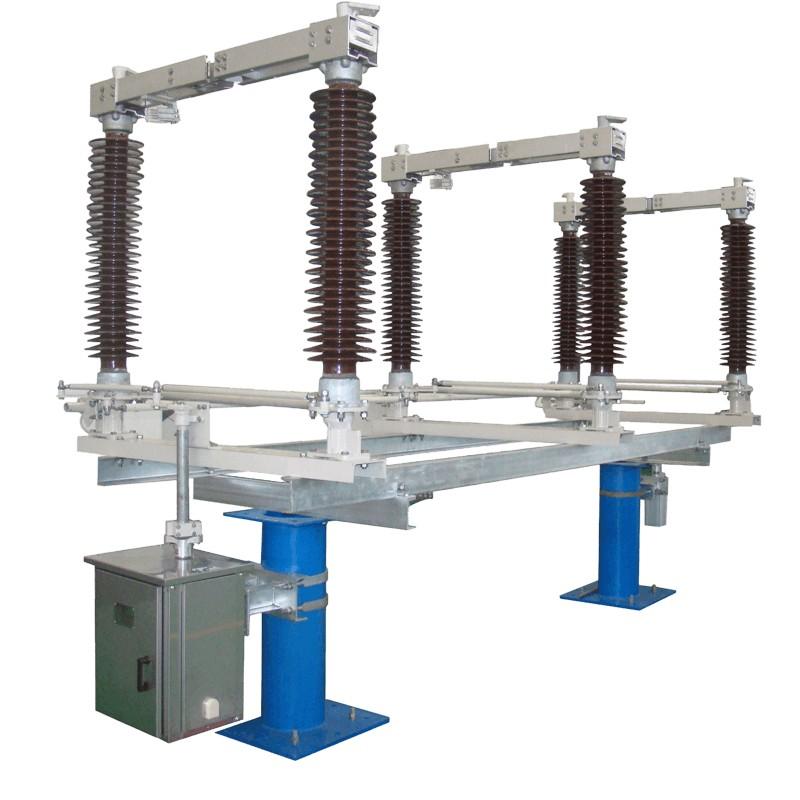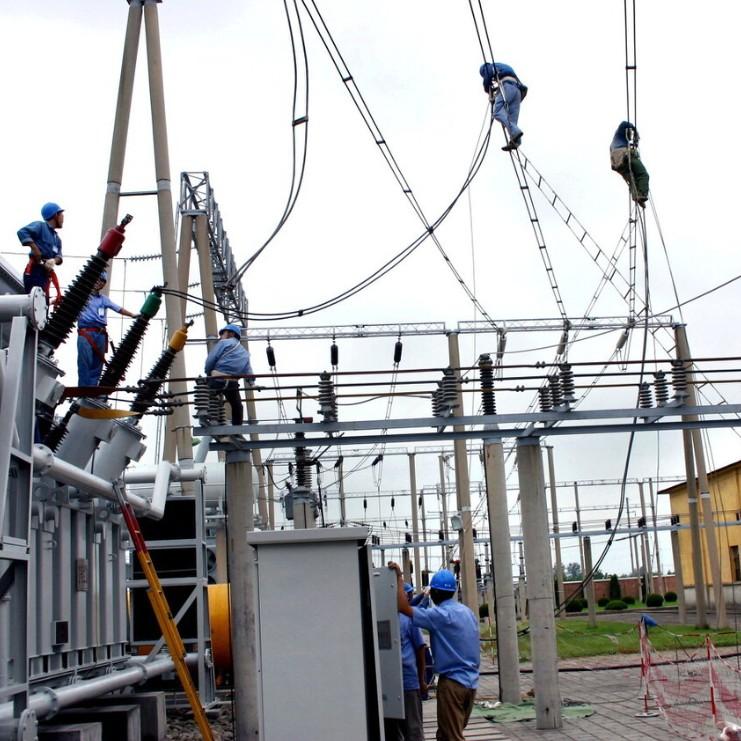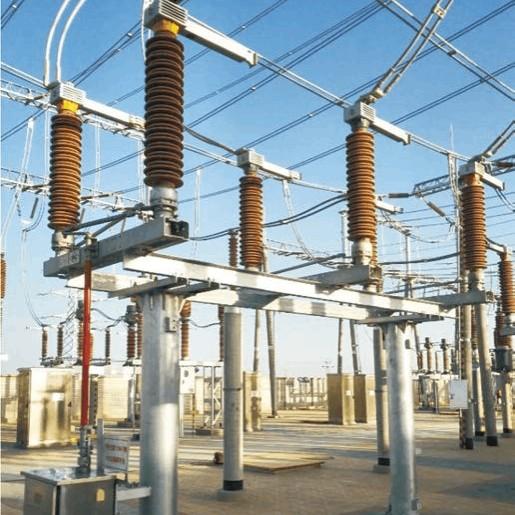1.Paghinabang sa Istruktura ug Pamaagi sa Pagtrabaho sa GN30 Disconnector
Ang GN30 disconnector mao ang isang high-voltage switching device na gamiton sa indoor power systems aron magbukas o magpadayon sa mga circuit sa panahon nga adunay voltage apan walay load. Kini angkop sa power systems nga may rated voltage nga 12 kV ug AC frequency nga 50 Hz o mas basa. Ang GN30 disconnector mahimong gamiton sama sa high-voltage switchgear o bilang standalone unit. Ang compact structure, simple operation, ug high reliability mao ang mga karakteristikas niini, nga gihatagan kini og wide application sa power, energy, transportation, ug industrial sectors.
Ang istruktura sa GN30 disconnector naglakip sa sumala nga mga komponente:
Fixed parts: kasagaran ang base, insulators, ug fixed contacts. Ang base nagsuporta ug naseguro sa tanang switch, naga-carry sa uban pang mechanical loads sa panahon sa operasyon. Ang insulators nagsuporta sa fixed ug rotating contacts, naggarahe sa electrical insulation sa panahon sa serbisyo. Ang fixed contacts gigamit sa pagkonekta sa power line ug gibutang sa base; sila wala mobiya sa panahon sa opening/closing operations.
Rotating parts: kasagaran ang rotating (moving) contact, rotating shaft, ug crank arm. Ang rotating contact mao ang aktibo nga komponente nga magbuhat sa switching action pinaagi sa rotation. Ang rotating shaft gibutang sa base ug nagsilbi isip pivot para sa movement. Ang crank arm naglehit sa rotating shaft hangtod sa operating mechanism, naggarahe sa motion sa rotating contact aron makamposible ang opening ug closing.
Operating mechanism: kasagaran ang manual ug electric operating mechanisms. Ang manual mechanism adunay operating handle nga mogpositisyon sa disconnector sa "working" o "isolated" position. Ang pag-rotate sa handle manual naga-actuate sa switch. Mahimo usab nga i-install ang electric operating mechanism aron mapadali ang automatic remote control sa switching operations.
Earthing device: Ang GN30 disconnector mahimong i-equip sa earthing switch aron maghatag og grounding functionality, nagsuporta sa operational safety.
Protective devices: Aron sigurado ug reliable ang operasyon, ang protective features sama sa protective covers ug barriers gibutang aron maprevent ang accidental contact sa live parts ug proteksyon sa personnel.
Auxiliary devices: Optional accessories sama sa live-line indicators ug fault alarm systems mahimong i-add batas sa user requirements aron mapadami ang intelligence, nag-enable sa real-time monitoring sa operational status ug timely fault detection ug handling.
2.Fault Analysis sa GN30 Disconnector sa 10 kV Switchgear
2.1 Classification ug Frequency Analysis sa Faults sa GN30 Disconnector
Bilang isang critical high-voltage switching device, ang GN30 disconnector nagplay og essential role sa power systems. Apan, mahimong mogrow ang uban nga faults sa panahon sa long-term operation, naaffect ang system reliability. Aron sigurado ug stable ang grid operation, kinahanglan nga iclassify ug i-analyze ang fault frequencies aron mapatuman ang targeted preventive ug corrective measures.
Ang faults sa GN30 disconnector mahimong icategory ngadto sa sumala nga mga klase:
Insulation faults: ang labi common nga tipo, kasagaran ang insulator breakdown, insulation aging, ug damage sa insulating materials. Kini mga faults nagsugyot sa insulation integrity ug nagrahang sa system safety.
Contact faults: kasagaran ang contact oxidation, wear, ug loosening, nga mahimong magresulta sa improper opening/closing ug impair sa circuit continuity.
Mechanical faults: sama sa jamming sa rotating components, crank arm fracture, o base deformation, nga nagresulta sa inflexible o failed operation.
Electrical faults: kasagaran ang motor failure, controller malfunction, o power supply issues, nga nagdisrupt sa automatic switching ug reduce sa system efficiency.
Thermal faults: resulta sa inadequate heat dissipation sa panahon sa operasyon, nagresulta sa temperature rise, component deformation, aging, o even damage.
Human-induced faults: resulta sa operational errors, improper maintenance, o incorrect installation, mahimong magresulta sa malfunctions o safety incidents.
Aron conduct ang fault frequency analysis, ang fault data sa specific period kinahanglan kolektahan ug statistically evaluated. Kini nga analysis naglakip sa:
Fault type distribution: counting sa occurrences sa bawhong fault type aron matukod ang proportion ug severity.
Root cause analysis: identifying sa primary causes aron guide sa prevention strategies.
Temporal distribution: analyzing sa kung asa ka oras nagoccur ang faults (e.g., time of day) aron correlate sa operational conditions.
Environmental correlation: assessing sa links sa faults ug environmental factors (temperature, humidity, dust).
Operation/maintenance correlation: evaluating kung unsa ang improper operation o delayed maintenance nagcontribute sa failures.
Kini nga analysis makatabang sa pag-identify sa key issues sa operasyon sa GN30 disconnector, enabling targeted improvements aron mapadami ang reliability ug safety.
2.2 Analysis ug Discussion sa Common Fault Causes
Apat ka main causes ang nagcontribute sa failures sa GN30 disconnector:
Unsa, design ug manufacturing defects. Ang poor design o substandard manufacturing processes mahimong magresulta sa insufficient structural strength, nagresulta sa part fracture o deformation. Ang inappropriate material selection—such as insulation materials lacking wear o heat resistance—usa ra sad sa factor nga nagincrease sa failure risk.
Pangitaa, kondisyon sa sobrang dako ug sobrang kusgan sa voltaje. Ang pag-ila nga sobrang dako mao ang nagpapadako sa temperatura, nagresulta sa pagdako sa temperatura o pagkatanda sa insulation, na nagbawas sa kapanguhaan sa switching ug isolation functions. Ang mga insidente sa sobrang kusgan sa voltaje (e.g., lightning strikes o grid surges) mahimong magresulta sa pagkabag-o sa insulation o arcing.
Trento, ang dili maayo nga operasyon. Ang mga error sa operator—tulad sa pag-operate bisan walay de-energizing, paggamit og dako nga pwersa sa handle nga nagresulta sa mechanical damage, o pag-neglect sa maintenance (e.g., failure sa pag-clean o pag-lubricate)—mahimo magtrigger og mga fault.
Pito, ang environmental ug natural factors. Ang ekstremong lamig mahimo magresulta sa motor failure tungod sa moisture condensation o freezing. Ang taas nga temperatura nag-accelerate sa pagkatanda sa insulation ug thermal expansion. Ang mga natural disaster tulad sa earthquake mahimo phisikal nga mapinsala o deform ang switch.
3.Mga Paraan sa Pag-improve sa Faults sa GN30 Disconnector sa 10 kV Switchgear
3.1 Mga Improvement sa Design ug Manufacturing
Ang pagpili sa materyales mahimo kaayo sa performance ug reliability. Ang high-strength, wear-resistant materials dapat gamiton para sa fixed ug rotating contacts aron molihok sa taas nga voltaje ug frequent operations. Ang insulation materials kinahanglan maghatag og excellent dielectric strength ug thermal resistance.
Ang precision manufacturing processes sigurohan sa dimensional accuracy ug assembly quality. Ang strict control sa machining tolerances nagpreventa sa fit issues o operational inefficiencies.
Sa panahon sa design, ang reliability analysis kinahanglan mosangpot sa potential stressors—voltage surges, arcing, localized overheating—aroon makilala ug mapugos ang failure risks.
Ang rigorous quality inspection ug testing sa tanang production—kasama ang raw material checks, component verification, ug pre-assembly reviews—mahimong importante. Ang mga test kinahanglan covers mechanical strength, electrical performance, insulation integrity, ug operational smoothness.
Ang mga manufacturer dapat mag-establish og comprehensive quality management systems, kasama ang quality control protocols, process instructions, ug inspection standards, aron standardize ang production, improve efficiency, ug reduce fault rates.
3.2 Mga Measures sa Pag-prevent sa Overload ug Overvoltage
Sa mga isyu sa overload (e.g., contact overheating, insulator expansion), immediate disconnect power, assess load conditions, ug redistribute power aron malihok ang recurrence. Kon dili mahimo ang pag-reduce sa load, deploy backup equipment o alternative power sources.
Sa mga insidente sa overvoltage (e.g., insulation breakdown, arcing), disconnect power ug inspect insulation ug component withstand capability. Replace degraded insulation o aged components immediately. Install overvoltage protection devices such as zinc oxide surge arresters aron maprotektahan ang disconnector gikan sa voltage spikes.
3.3 Improved Operational Procedures
Ang mga operator kinahanglan thoroughly understand the manual, grasp working principles, ug follow correct procedures. Always verify de-energization before operation aron maprevent ang accidents.
Ang mga maintenance personnel dapat mogamit regular cleaning, lubrication, ug inspections. Ang cleaning nagremove sa dust ug contaminants aron mapreserbar ang insulation stability. Ang lubrication nagreduce sa friction aron mas smooth ang operation. Ang inspections nakakadetect sa early signs of wear o damage.
Conduct periodic checks ug tests—kasama ang contact wear, insulator condition, mechanism function, ug electrical performance—aroon verify compliance sa design specifications ug preempt major failures.
3.4 Prevention ug Control sa Environmental Factors
Ang installation sa protective enclosures effective nga nagshield sa internal components gikan sa dust, rain, debris, ug contamination, preserving insulation performance. Ang enclosures kinahanglan designed aron allow operation ug maintenance access.
Sa low-temperature environments, gamiton ang insulation materials nga verified cold-resistance aron maintain mechanical ug electrical properties ug prevent brittleness.
Sa harsh conditions, regularly inspect insulators, insulation structures, ug electrical components. Perform insulation resistance ug electrical performance tests as needed aron detect ug address issues early.
4.Conclusion
Kini nga paper nagconduct og in-depth analysis sa common failure causes sa GN30 disconnector sa 10 kV switchgear ug propose og series of improvement measures aimed at enhancing its reliability ug safety aron ensure stable power system operation. Future research mahimo explore additional influencing factors ug more effective mitigation strategies. Furthermore, practical case studies mahimo validate the effectiveness sa methods, providing richer theoretical support sa reliable operation sa power systems.






















